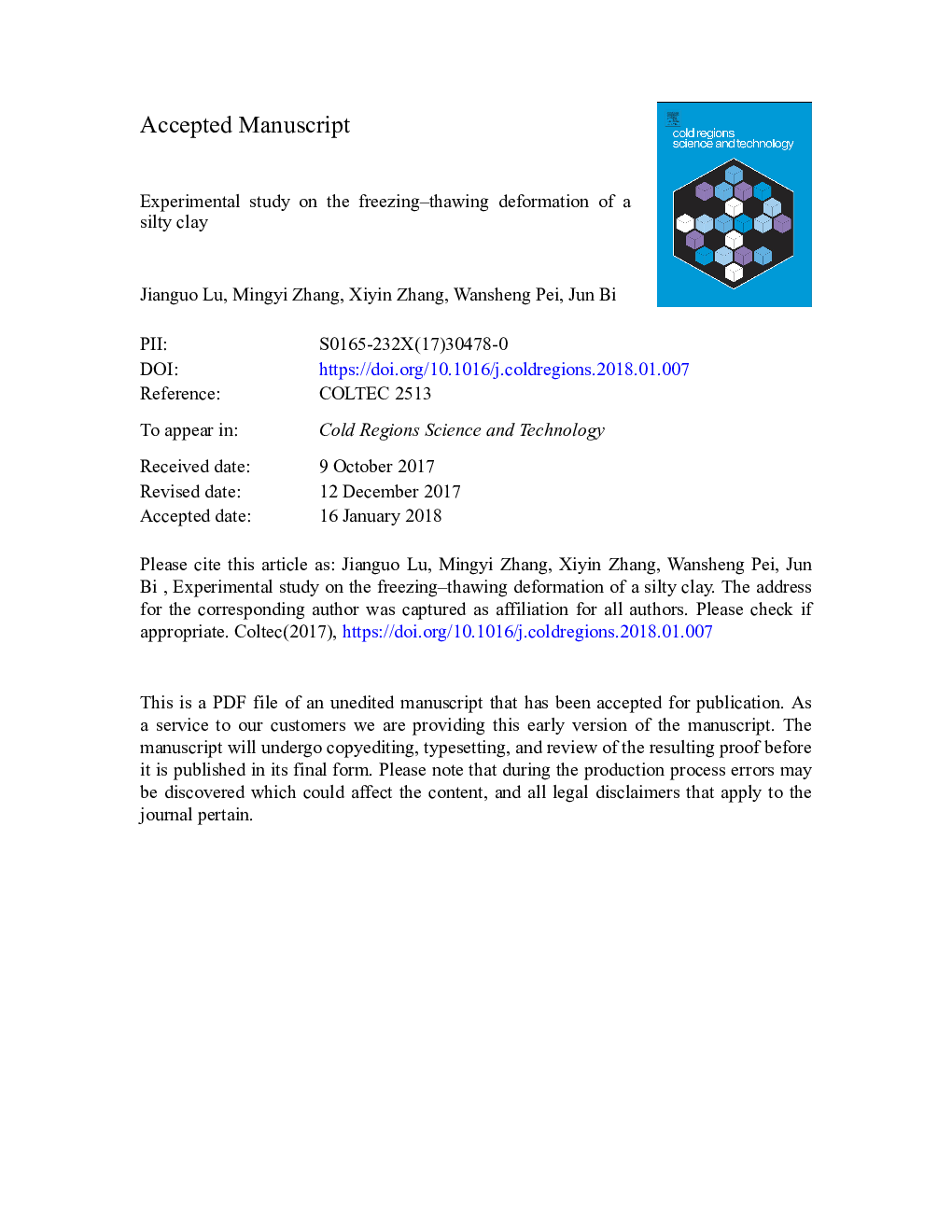| Article ID | Journal | Published Year | Pages | File Type |
|---|---|---|---|---|
| 8906451 | Cold Regions Science and Technology | 2018 | 39 Pages |
Abstract
The freezing-thawing deformation is a key factor in determining damages for engineering structures in cold regions. Based on the laboratory experiments, the characteristics of the freezing-thawing deformation were analyzed, as well as the variation of the matric suction. The results show that in each freeze-thaw cycle, the freezing-thawing deformation can be divided into five stages, i.e. cold shrink, fast frost heave, slow frost heave, thermal bulge and thaw settlement. At the onset of each cooling process, the cold shrink occurs and the freezing-thawing deformation decreases slightly; and then, with the decreased temperature, the freezing-thawing deformation rapidly increases at the beginning of freezing (fast frost heave); and subsequently slowly increases with freezing. During the warming processes, the bulge occurs with the rapid increase of the ambient temperature; later, with the thawing of ice, the freezing-thawing deformation decreases. Besides, there are similar changing trends for the freezing-thawing deformation and the matrix suction during the freezing-thawing processes. However, their changing mechanisms are completely different, and the soil matric suction has a stronger sensitivity to the variation of the volumetric unfrozen water content. Furthermore, the effect of freeze-thaw cycles on the characteristic variables of the freezing-thawing deformation, such as cold shrink, net deformation, frost heave coefficient and thaw-settlement coefficient, mainly occurs in the first freeze-thaw cycle, which may be due to the fact that the first freeze-thaw cycle has a significant influence on the soil structure and pore distribution for the remolded sample.
Related Topics
Physical Sciences and Engineering
Earth and Planetary Sciences
Earth and Planetary Sciences (General)
Authors
Jianguo Lu, Mingyi Zhang, Xiyin Zhang, Wansheng Pei, Jun Bi,
